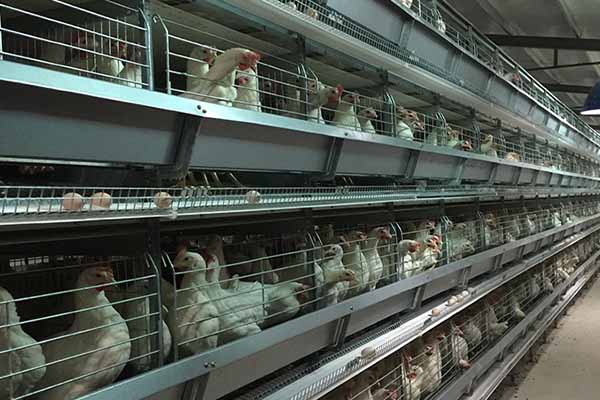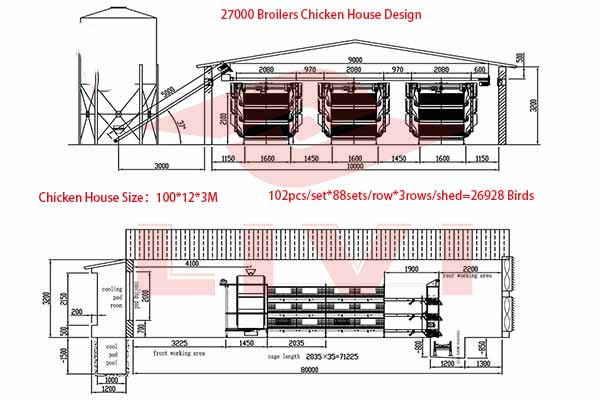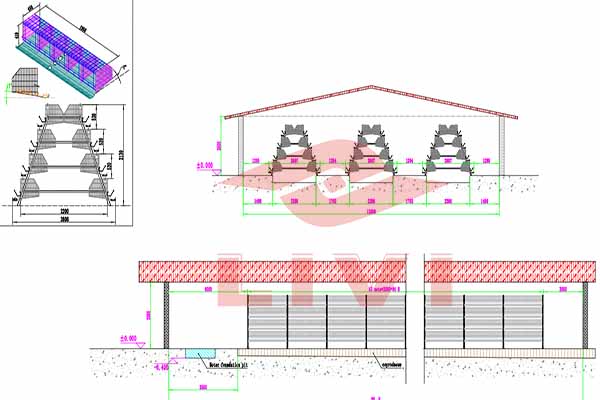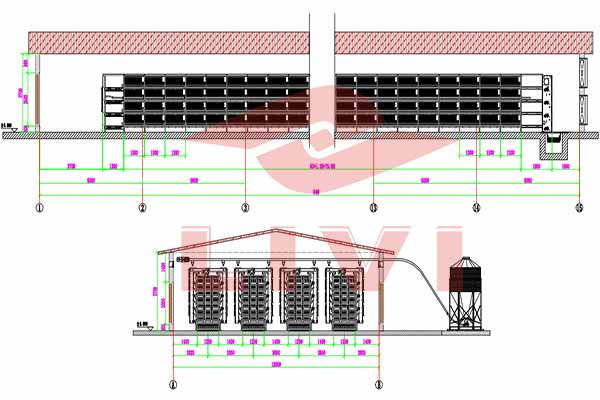Optimizing Chicken Battery Cages for 250,000 Chickens in Kenya
Understanding the Scale of Chicken Battery Cages in Kenya
In Kenya, the poultry industry has been experiencing significant growth, with a substantial increase in the number of chickens being raised. As of 2023, there are approximately 250,000 chickens housed in battery cages across the country. This scale of operation requires efficient and modern farming practices to ensure the well-being of the birds and maximize profitability.
Key Considerations for Large-Scale Chicken Battery Cages
To accommodate such a large number of chickens, several factors must be taken into account when designing and implementing battery cage systems:
- Space Allocation: Each chicken requires a specific amount of space to move around and exhibit natural behaviors. Typically, this is around 0.3 to 0.5 square feet per bird.
- Airflow and Ventilation: Proper airflow is crucial to maintain a healthy environment and prevent respiratory diseases. Ensuring that the cages are well-ventilated can reduce the risk of ammonia buildup and heat stress.
- Food and Water Access: The design should facilitate easy access to feed and water for all birds, ensuring they receive adequate nutrition.
- Egg Collection: An efficient system for collecting eggs is essential to maintain the cleanliness of the cage and prevent contamination.
- Health Monitoring: Regular health checks and disease prevention measures are vital for the sustainability of the flock.
Designing Battery Cages for 250,000 Chickens
For a facility housing 250,000 chickens, a comprehensive design is essential. Here are some key points to consider:
| Aspect | Recommendation |
|---|---|
| Number of Rows | Opt for a compact layout with 10 rows of cages to minimize space usage. |
| Cage Type | Choose deep litter or wire floor cages based on environmental control and egg quality requirements. |
| Watering System | Implement a乳头式饮水系统 to ensure consistent water availability. |
| Feeders | Use automated feeders that can distribute feed evenly and adjust quantities based on the flock size. |
| Health Monitoring | Install automated systems for temperature, humidity, and ammonia levels to detect potential issues early. |
Cost-Benefit Analysis
The initial investment for setting up a large-scale battery cage operation for 250,000 chickens can be substantial. However, a well-designed system can lead to significant cost savings over time through improved efficiency, health, and egg yield.
Contact Us for Free Consultation and Quotes
If you are considering a large-scale chicken battery cage operation in Kenya or any other country, LIVI Mechanical is here to assist you. Our team of experts can provide you with a free, customized design and equipment quotation. Don’t hesitate to reach out for your consultation today.
Feel free to leave a comment or contact us directly for more information on our services and solutions.
<img src="http://www.qualitychickenfarm.com/wp-content/uploads/2025/11/a-large-scale-300000-layers-chicken-battery-cage-for-sa le-in-bolivia-4.jpg” alt=”inserted image”>
le-in-bolivia-4.jpg” alt=”inserted image”>




